LG C4 is a television that will likely have no competition in its price range for many users. Thanks to the wide options for purchase, it will appeal to those looking for a TV strictly for movies and series, as well as for gaming. The advanced WebOS system and a remote that works like a mouse will certainly make everyday use much easier and ensure that we will likely stick with this brand for a much longer time. The OLED panel implemented by the manufacturer, resulting from over 10 years of history, shows that it has not yet said its last word. Brightness results in HDR material are very solid and can display an incredibly dynamic and deep image. Here, it’s worth mentioning the excellently implemented dynamic tone mapping feature, which makes HDR10 images look almost as good as Dolby Vision. And if we’re talking about fidelity to artistic vision, we can't forget about how calibratable LG TVs are, allowing for a great deal of freedom for the calibrator and classic calibration for home users, as well as 3D LUT for professionals. However, if we are looking for a gaming TV, then the LG C4, like most of the manufacturer’s OLED TVs, will be the ideal choice. With the implementation of HDMI 2.1 ports and the full use of their potential, we can enjoy extremely smooth gameplay with all the benefits, such as VRR, ALLM, FreeSync, or G-Sync. Of course, the panel, which has a maximum refresh rate of 144 Hz and an advanced smoothing technology, will also allow for very smooth and sharp images during broadcasts of various sporting events. It’s hard not to give a high rating to LG OLED C4, as it's difficult to find a TV in a similar price range with such advanced features among the competition.
- Matching (Score)
- Our verdict
- TV appearance
- Where to buy
- Contrast and black detail
- HDR effect quality
- Factory color reproduction
- Color reproduction after calibration
- Smoothness of tonal transitions
- Image scaling and smoothness of tonal transitions
- Blur and motion smoothness
- Console compatibility and gaming features
- Input lag
- Compatibility with PC
- Viewing angles
- TV efficiency during daytime
- Details about the matrix
- TV features
- Apps
- Playing files from USB
- Sound
LG OLED C4 vs Samsung S85F OLED
Direct compare
C45 / C41
S85F / FAE / FAU
Available screen sizes: 55”

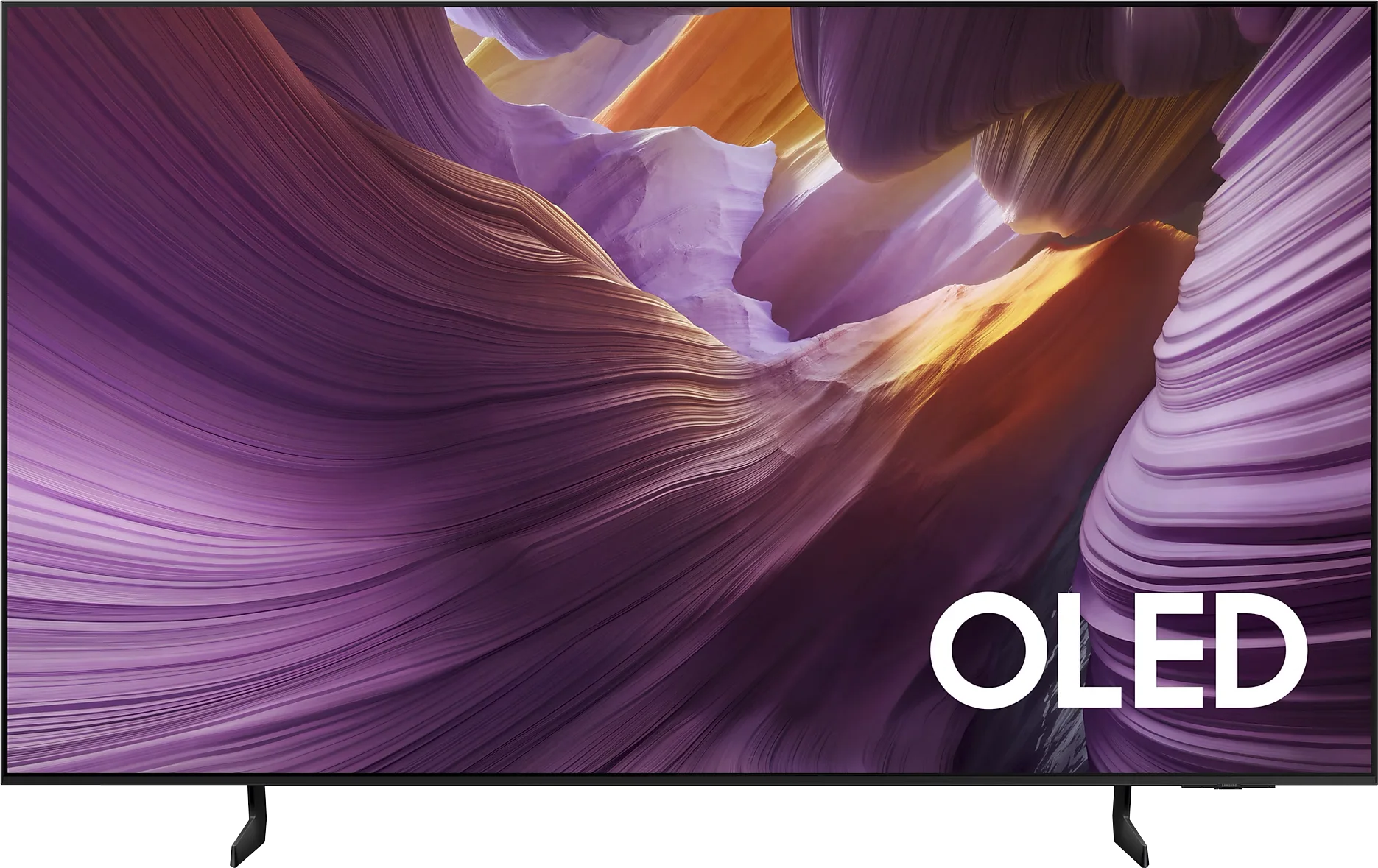
Panel type: WRGB OLED
Resolution: 3840x2160
System: WebOS
Model year: 2024
Complete the survey to find out the result

Panel type: QD-OLED
Resolution: 3840x2160
System: Tizen
Model year: 2025
Complete the survey to find out the result

Overall rating
8.2
8.0
Movies and series in UHD quality
8.2
8.3
Classic TV, YouTube
8.8
9.0
Sports broadcasts (TV and apps)
8.6
8.8
Gaming on console
9.3
9.3
TV as a computer monitor
8.6
7.6
Watching in bright light
5.7
5.1
Utility functions
9.0
7.2
Apps
8.7
8.7
Sound quality
7.5
7.2
Complete the survey to find out what fits your preferences
Advantages
High efficiency in HDR materials
Very good colour reproduction after calibration
Faithfulness of image with directorial vision
Excellent collaboration with consoles and PCs - low input lag, multitude of conveniences
Advanced motion smoothing system
Outstanding black levels and contrast
Amazing colour palette coverage thanks to the QD-OLED panel
Great picture quality in SDR and HDR content
High colour accuracy after calibration
Very good motion smoothness – 120 Hz OLED panel
Rich set of features for gamers: VRR, Game Bar, low input lag
4 HDMI 2.1 ports with full 48 Gbps bandwidth
Advanced and smoothly operating Tizen system
Solar Remote with multiple capabilities
Disadvantages
Sometimes visible tonal transitions
No USB recording function and PiP
No Dolby Vision
Slight cherry black under very strong external light (not visible when watching in cinema conditions)
No HGiG function*
* This function disappeared with software update 1110.7 – we are monitoring this situation closely.
Our verdict
The Samsung S85F with a QD-OLED panel is capable of surprising – and in a very positive way. Even before the tests, we did not think that in the case of TVs often referred to in the context of "panel lotteries", one could come across something that would benefit the user. Yet, in this case, particularly with the 55-inch version, it has fully succeeded. The QD-OLED panel, as expected from organic technology, offers near-perfect blacks and contrast in cinematic conditions. However, the difference lies in the way the colours are rendered – here it is simply exceptional. The colour gamut coverage is impressive, and after a slight calibration, the colours become almost exemplary. Motion fluidity is also at a very high level. The 120 Hz panel handles both sports and action films excellently. And if someone plans to connect a console to the S85F, they will receive a full set of advantages: low input lag, variable refresh rate, Game Bar, and full HDMI 2.1 support. In everyday use, we were supported by the Tizen system – closed, but extremely polished. It responds quickly, offers a rich selection of apps, and features like AirPlay and voice control make it hard to find anything more complete in this category. True, the S85F is not without its flaws. However, the balance of pros and cons is exceptionally favourable here. One could even get the impression that it is one of the best TVs in its price segment.
TV appearance




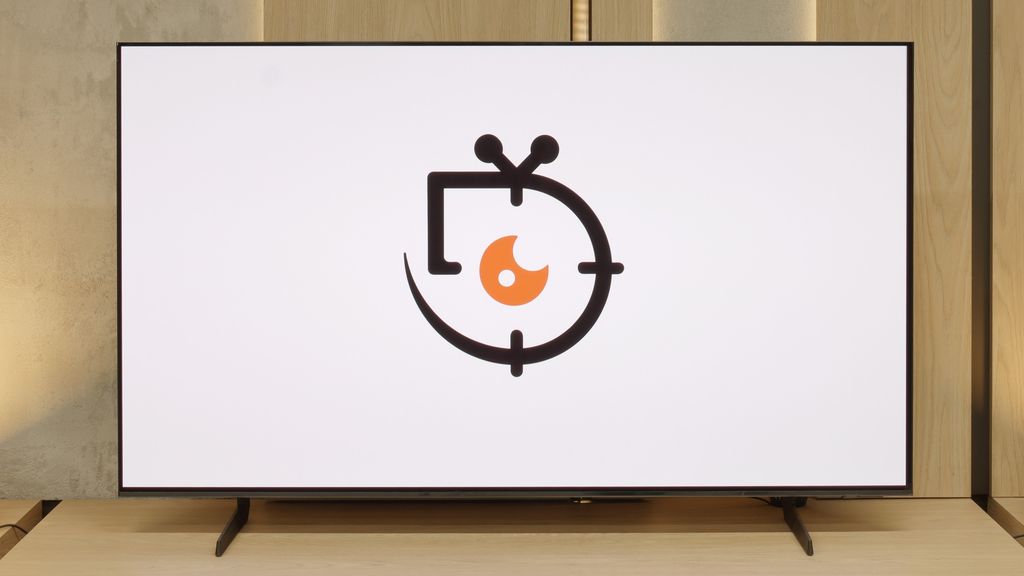

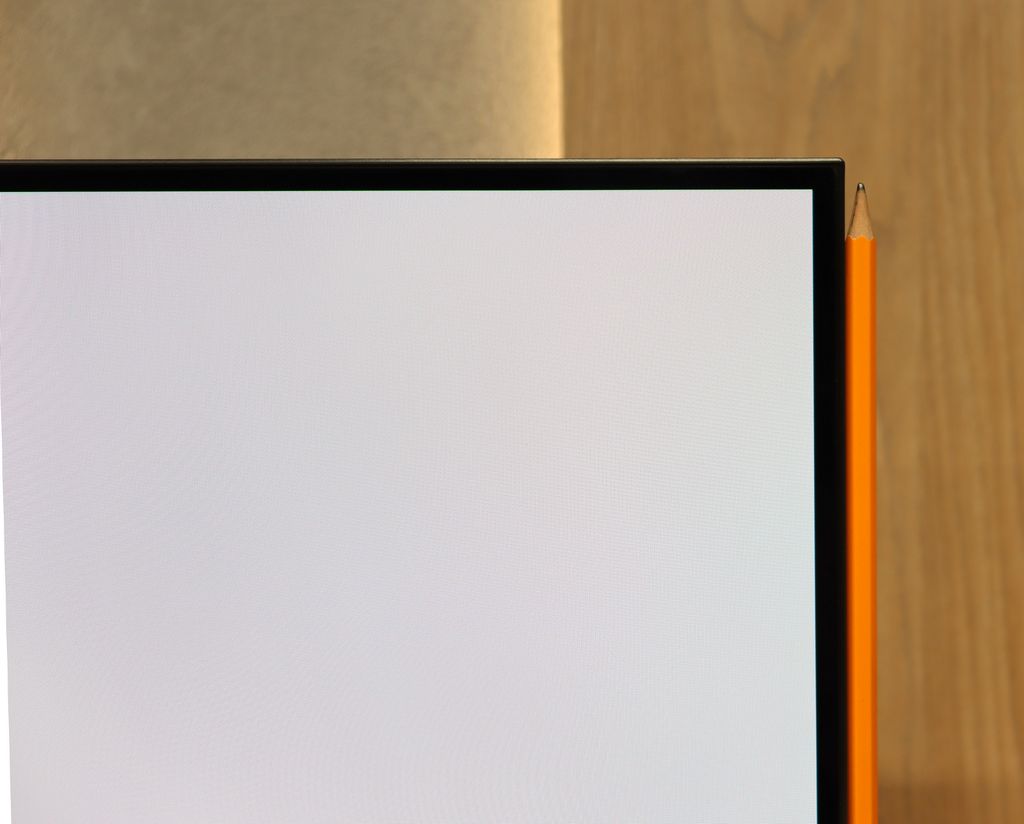
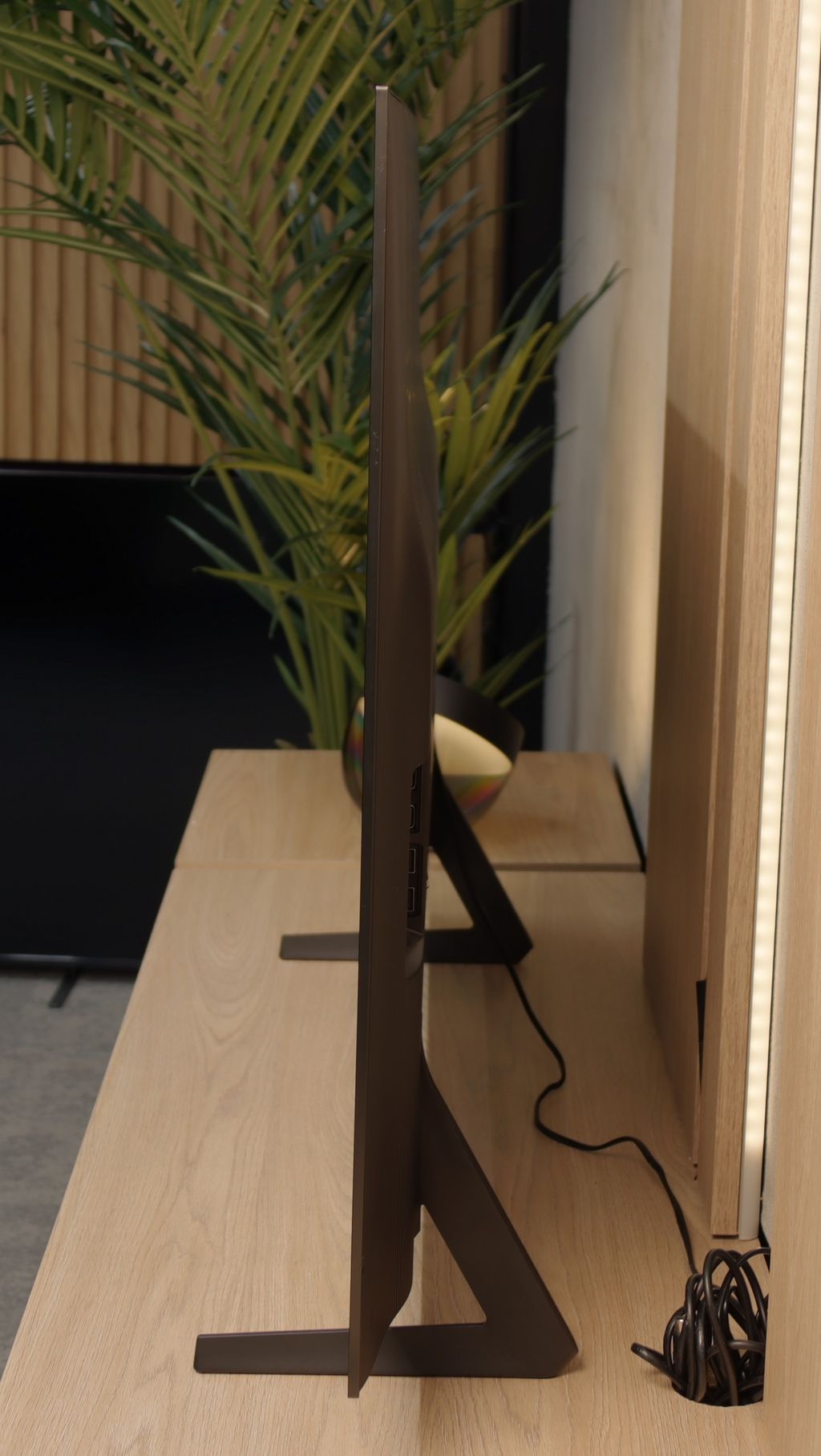
Contrast and black detail
10/10
10/10
Contrast:

Result
∞:1

Result
∞:1

Result
∞:1

Result
∞:1

Result
∞:1

Result
∞:1

Result
∞:1

Result
∞:1

Result
∞:1

Result
∞:1
Halo effect and black detail visibility:

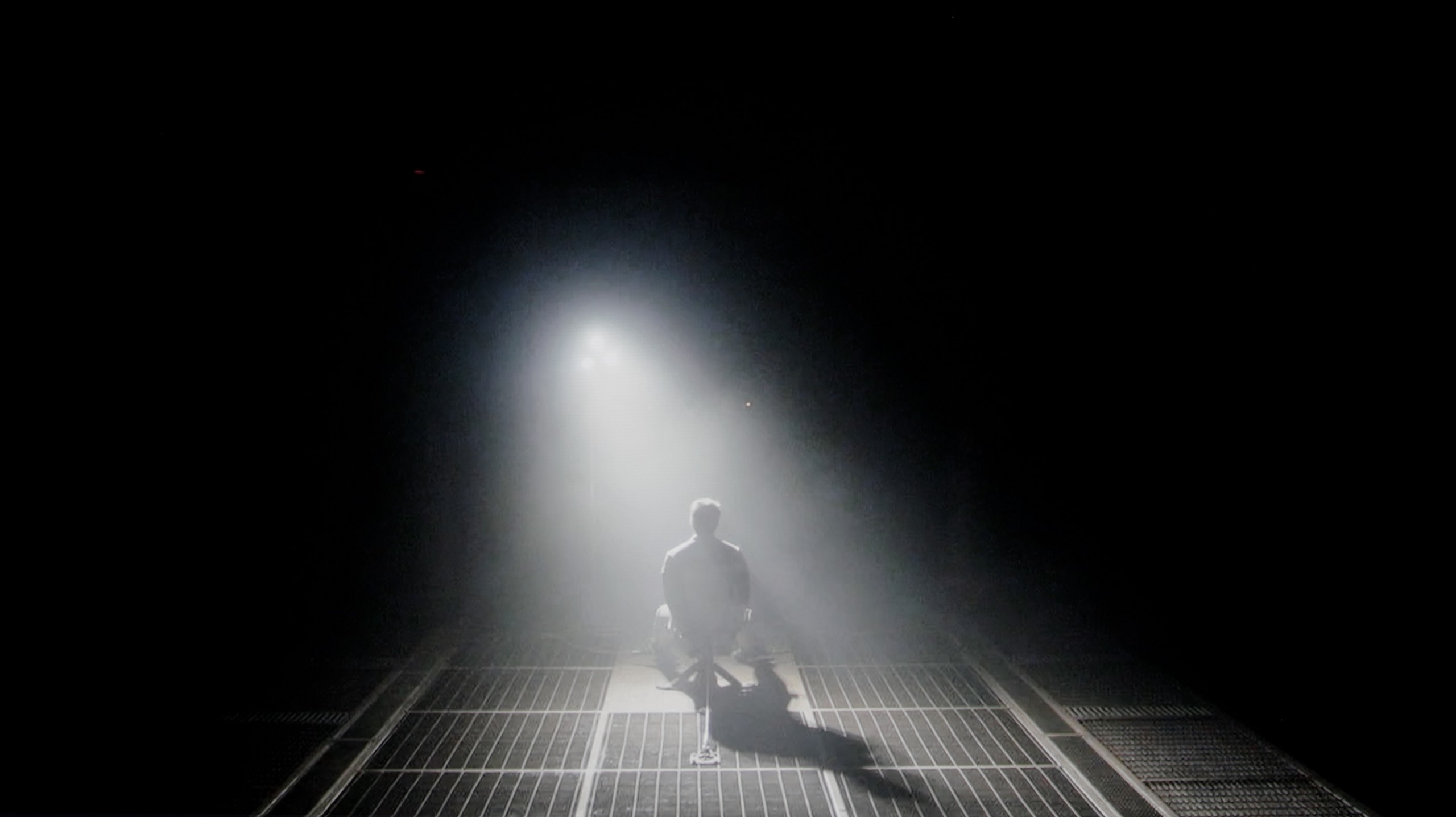
LG OLED C4, as the name suggests, uses an organic panel of its own production. This series definitely belongs to one of the most recognisable on the market. Over 10 years of experience in building self-emissive panels has allowed for the refinement of each subsequent design, with the models from the 2024 range being the quintessence of this process. Of course, the use of this type of screen enables the achievement of flawless contrast and blacks, allowing viewers to immerse themselves in the world created by the director. This is possible thanks to the OLED panel, characterised by the absence of conventional backlighting, which instead allows current to pass through organic pixels. This permits super-accurate image control, thereby eliminating issues such as dimming of delicate fine details or the halo/blooming effect. Looking at both of our test scenes, we can notice two things: perfect light separation and a plethora of details in the movie "Sicario 2".
Samsung S85F in the 55-inch version has something special – it features a QD-OLED panel. This might sound quite surprising, but that's the fact, at least in Poland. So the question arises: is the difference compared to last year's S85D with a WOLED panel even noticeable? Yes, although in this specific test – black levels and contrast – it practically makes no difference.
Regardless of the scene, the S85F presents infinite contrast and perfect blacks that we expect from any OLED. These results can impress even the most demanding film enthusiasts. It's worth remembering that only TVs with organic panels can provide such deep blacks – and it doesn't matter whether it's WOLED or QD-OLED. So if you dream of a screen that can 'turn off' the light in a scene just as effectively as a boutique cinema in a dark room, the S85F is one of those TVs.
HDR effect quality
6.9/10
6.2/10
Luminance measurements in HDR:

Result
796 nit

Result
772 nit

Result
869 nit

Result
837 nit

Result
604 nit

Result
666 nit

Result
703 nit

Result
742 nit

Result
732 nit

Result
433 nit
Scene from the movie “Pan” (about 2800 nits)


Scene from the movie “Billy Lynn” (about 1100 nits)


Static HDR10


Dynamic: Dolby Vision
Dynamic: HDR10+


HDR luminance chart:
Samsung S85F OLED
Luminancja HDR
Luminance of RGB colors
LG OLED C4
Luminancja HDR
Luminance of RGB colors
The results of HDR materials are definitely among the better ones. Practically every film significantly exceeds the 700 nits barrier, which allows for a very realistic image. Of course, none of them surpasses the magical thousand, however, the combination of such results along with unlimited contrast and black effectively boosts the visual outcome. The last of the scenes, featuring a fullscreen sun burst, is indeed less bright than the others, although it still represents a respectable level. It's also worth mentioning the excellent coverage of the DCI-P3 colour palette, which will enable the achievement of exceptionally vivid colours.
As an OLED, the Samsung S85F can shine – literally. In favourable conditions, it can generate brightness exceeding 750 nits. This is significant because most films are created with displays aiming for around 1000 nits. In practice, this means that in scenes with moderately large, bright elements, the picture can look absolutely stunning. However, it's not always so rosy. When an enormous amount of light appears on the screen – whether it's an expansive, bright background or an entire frame filled with white – the S85F must tone it down. Brightness can drop by even four times in such scenes. This limitation is well-known to anyone familiar with OLEDs in this price segment, so we don't view it as a particular fail. However, something that deserves praise is what sets this model apart from the competition – colour gamut coverage. Thanks to the QD-OLED panel, our colour meter indicated values exceeding 100% coverage of DCI-P3 and an impressive 86% for the ultra-wide BT.2020 palette. Such results are hard to find even in televisions that cost several times more.
Factory color reproduction
8.1/10
5.5/10


Factory Mode
After calibration
The best factory mode implemented in the tested television was "Filmmaker". That was the one we used during all tests. This mode, in terms of colour reproduction, turned out to be quite decent, although other flaws effectively detracted from the enjoyment of the viewing experience. Starting with the most basic one, which is white balance, it was easy to notice that this was marked by a dominance of red, which completely altered the characteristics of the picture. We could see a strong yellowing of the whites and a shift of all colours to warmer tones. The gamma, which is a graph as equally important, if not more so, was quite severely reduced, resulting in a significant drop in contrast, except for the start of the graph, where the television insidiously lost details. That’s all regarding SDR materials. Looking closely at films with a wide dynamic range, we can observe exactly the same phenomenon of white balance yellowing as in films with a standard colour palette. The EOTF curve, which replaces the gamma chart for us, is practically perfect and cannot be faulted.
Samsung, as befits a manufacturer with ambitions, has equipped the S85F with a mode called Filmmaker. Its task is simple: to make the colours on the newly purchased television as faithful as possible to what the director intended to show us. Sounds great… but, as is often the case, a theory that sounds wonderful doesn’t always translate into perfect practice.
In the tested unit, it quickly became apparent that the image – due to an excess of blue and red – looked as if someone had gone a bit overboard with the saturation. As a result, there were quite significant colour errors, particularly in 4K content. On top of that, there was an issue with brightness – the S85F could brighten most scenes more than it should, stripping them of the intended mood.
Fortunately, Samsung televisions, including the S85F, offer an impressive number of settings for advanced calibrators. This means that we could see what this panel is really capable of when it gets into the right hands.
Color reproduction after calibration
9.5/10
9.3/10




As we mentioned earlier, LG televisions are equipped with advanced tools for carrying out the calibration process. We used them to model the picture in line with what the director envisioned. And without modesty, we must admit that we achieved this phenomenally. Both SDR and HDR materials present a level that clearly indicates this is how a film should look. It's worth taking a look at the colour errors on the "ColorChecker" palette, where practically none of them exceed "1", except for two samples.
Thanks to the huge number of settings in the menu, we managed to bring the S85F almost to perfection. White balance in SDR content? Literally perfect – deviations do not exceed a value of "1". So we can confidently say that in materials with not too high dynamics, we have an image that's close to reference.
In HDR content, minor issues appeared, but they don't have much significance in practice – most errors fall below the threshold of perception, which is a value of "3". We also managed to tame the S85F when it comes to brightness management – the EOTF curve, even in films, holds nearly perfect straight line. This is one of those cases where after calibration, you can comfortably forget about the settings and simply watch movies and series at the highest level.
Smoothness of tonal transitions
7.1/10
7.9/10







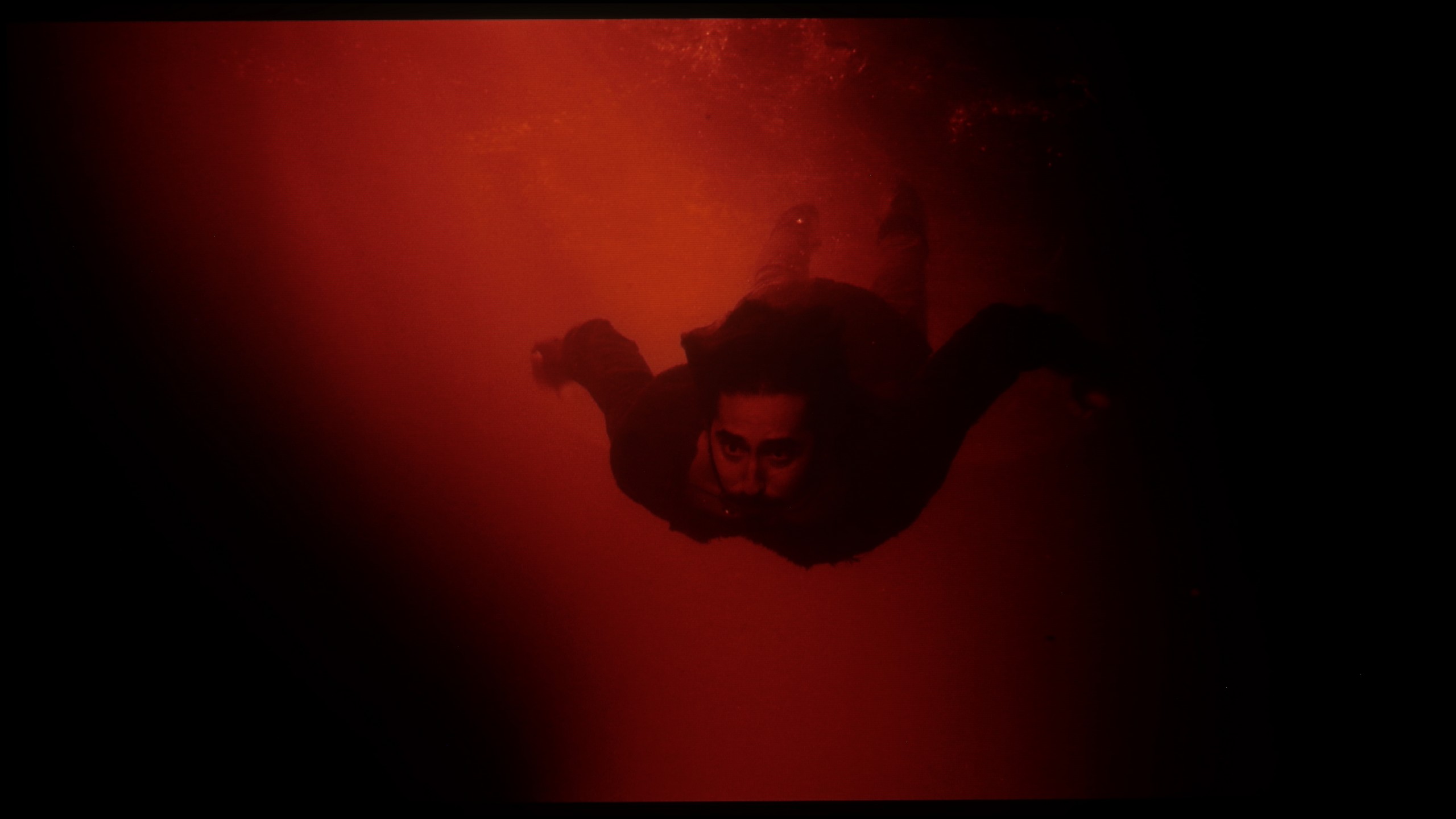




The fluidity of tonal transitions in LG televisions has always been a rather sensitive issue, as the manufacturer, despite impeccable performance in other areas, has almost always struggled to get this right. The evaluation results for the fluidity of tonal transitions in the tested television were quite good, with issues mainly visible in darker scenes, such as the last two scenes. Interestingly, this is a significantly better result than the highest model from the manufacturer, namely the LG G4.
Thanks to the QD-OLED panel, colour blending on the S85F is really very good. It's particularly worth noting how it performs in the darkest, most demanding scenes – where most TVs start to struggle, this model operates almost perfectly.
Interestingly, a slight stumble can be noticed in those easier, brighter shots. There is minimal colour banding, but it's so subtle that it's hard to believe it would genuinely bother anyone during viewing.
Image scaling and smoothness of tonal transitions
8/10
7/10
Smooth transition function

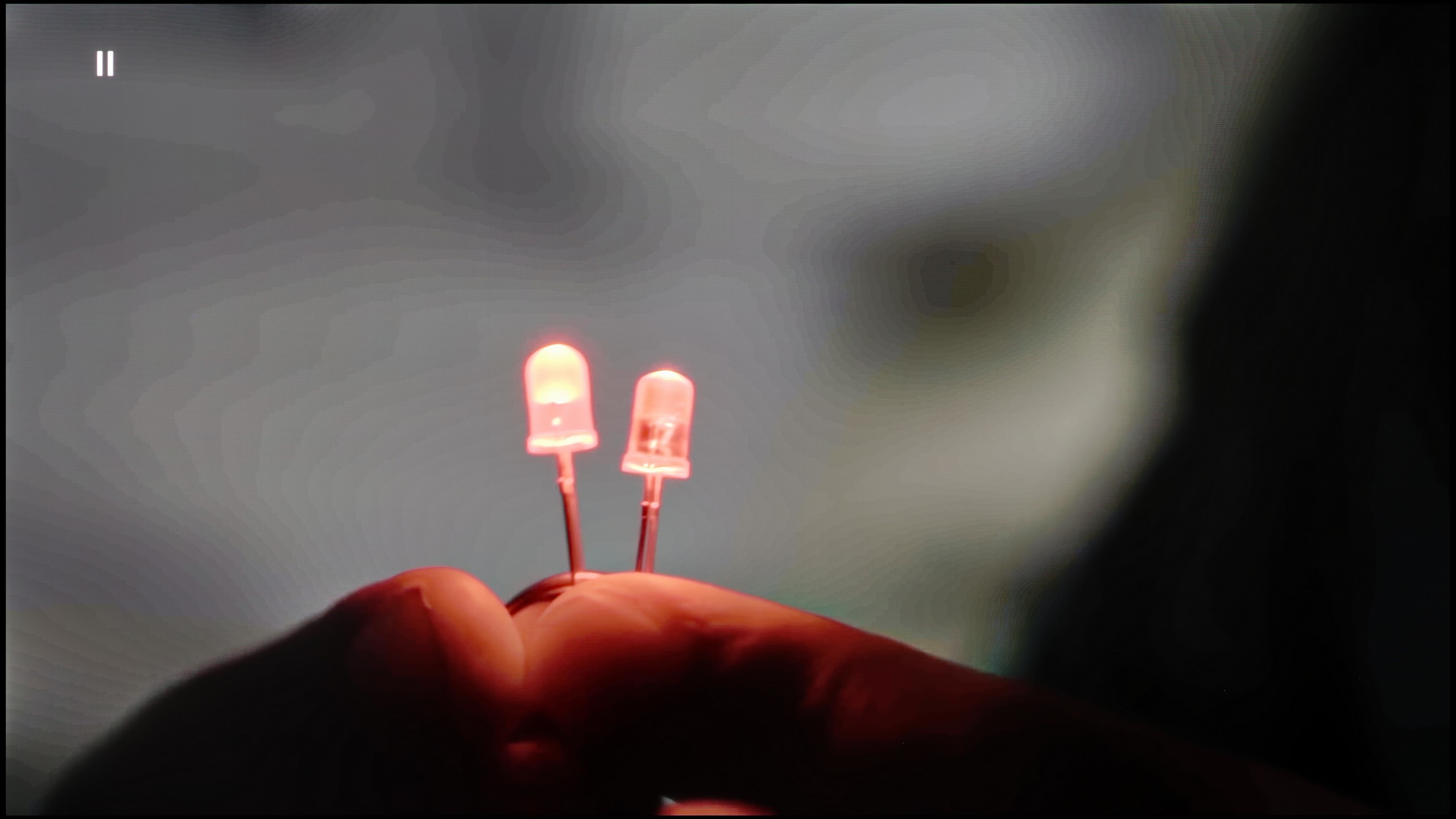
Image without overscan on the SD signal


Once again, we will take a look at the feature responsible for gentle gradation, but we will also address the one that aims to enhance the quality of lower-quality materials. The default smoothing of tonal transitions, as we could see, was not the worst, but it can be improved further. The function has a slider that allows us to adjust its intensity. We recommend using the former, as it produces very good results and does not blur important details.
Image scaling on LG C4 is quite good, however, it cannot be said to be without flaws. The image is slightly sharper by default, although not in a very noticeable way. While jagged edges of trees can be seen, it is not a major issue when compared to other manufacturers.
The tone transition smoothing function in the S85F works really effectively – it can completely eliminate the problem of visible banding in very poor quality material, such as from YouTube. Unfortunately, even the lowest level of this option comes with compromises. The noise reduction is so aggressive that it can smooth out film grain, which many of us consider to be an element of the cinematic atmosphere. At the “Standard” level, we didn’t notice this function removing anything significant from the image, so we can recommend this setting. On the other hand, the “High” level is a different story – it can smooth out not just noise, but also small, desirable details like, for example, the texture of objects.
When it comes to image scaling, the S85F performs very well. The material looks sharp, and the only slight imperfection is the barely noticeable aliasing of edges. And there’s the ongoing issue with Samsung televisions – overscan. This can cause some scenes to be slightly cropped, which is worth noting when watching very old content.
Blur and motion smoothness
8.5/10
8.5/10

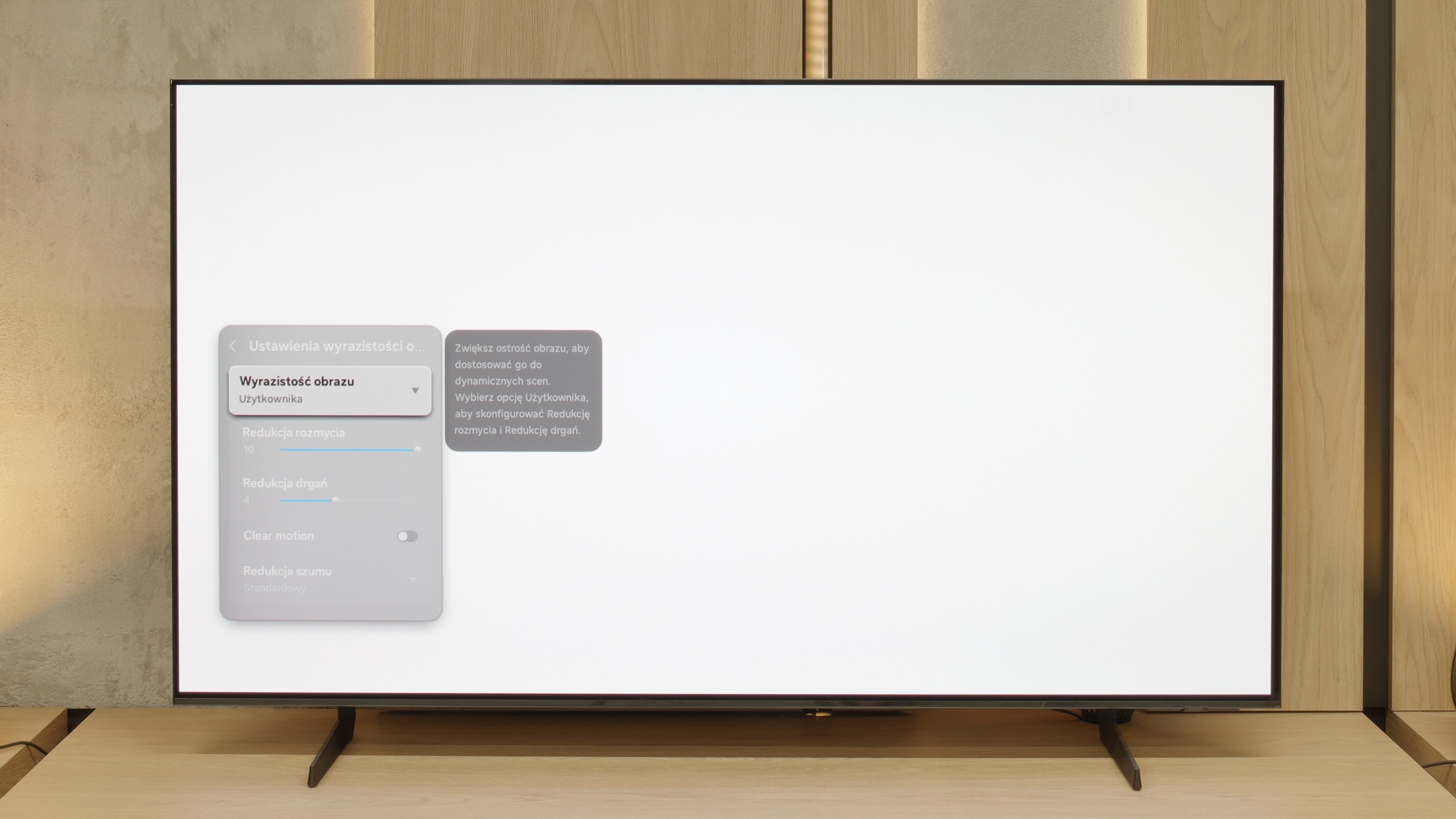
Blur (native resolution, maximum refresh rate):






Blur (BFI function enabled):
Image flickers in this mode



Image flickers in this mode



Smużenie ():
Smużenie (4K@60Hz Game Motion Plus):

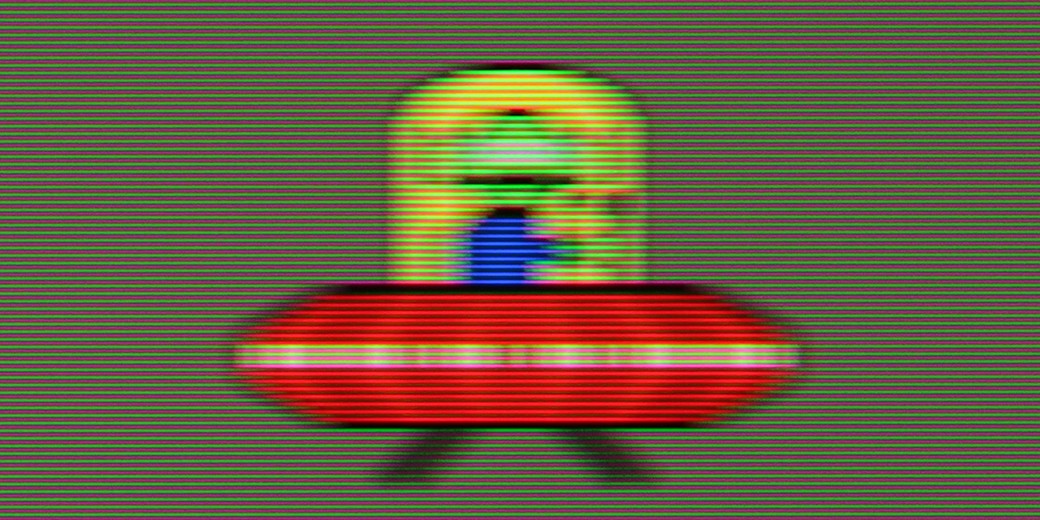
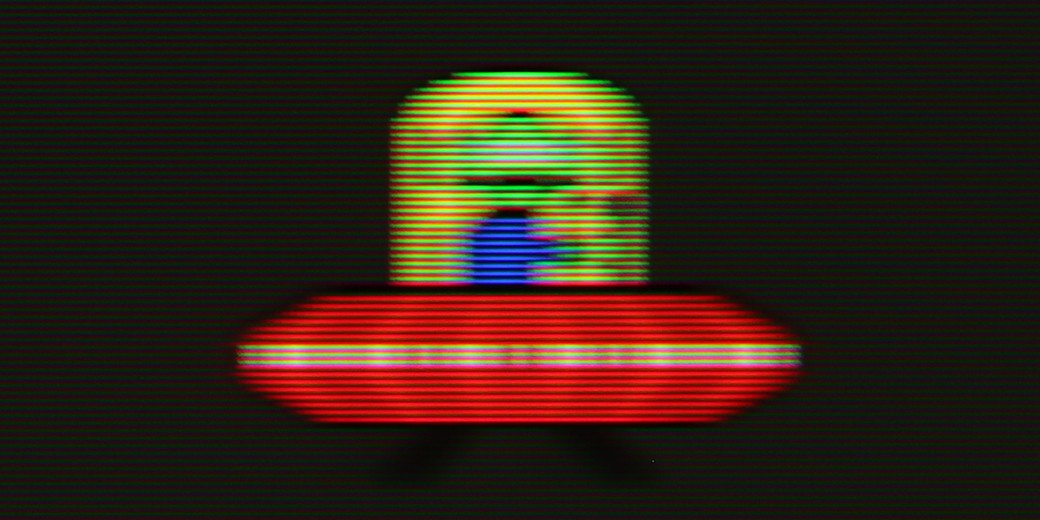
The maximum refresh rate we can set on the LG G4 is 144 Hz. Naturally, this is only possible when connecting the TV to a very powerful PC. Otherwise, we will operate at a maximum refresh rate of 120 Hz, which is recommended if we primarily want to watch sports or content with a lot of motion dynamics. For those who require high fluidity of the image, the manufacturer has implemented a multi-level motion smoother called "TrueMotion". It has been divided into two separate sliders that adjust the sharpness of moving images (De-Blur) and judder (De-Judder). Both sliders can be set in the range of 0 to 10, with each degree affecting the level of smoothing, allowing everyone to find their sweet spot.
The panel of the LG OLED C4 features an average response time of less than 1 ms (which directly results from our measurements), enabling the achievement of an extremely clear image, unattainable for LCD TVs, which can have response times of up to several milliseconds. This is clearly evident in the images from the "UFO Test," which show no trailing blur behind the object.
S85F is an incredibly fast television – and that’s not just empty hype. Thanks to the 120 Hz OLED panel, dynamic scenes, whether in games or while watching a live match, look just as they should – smooth, sharp, and without the feeling that something is "slipping" out of frame. The lightning-fast pixel response time, typical of OLEDs, plays a big role here. Transitions between frames are virtually instantaneous, and the image remains clear even during the fastest camera movements. A ball flying across half the field? A car speeding in a chase scene? Everything here is clear and free of the typical "trail" associated with LCDs.
This is exactly what we expect from a good OLED – zero compromises when it comes to motion smoothness. The S85F gives the impression that regardless of the pace of action, we can focus on what’s happening on the screen, rather than on the imperfections of the image.
Console compatibility and gaming features
10/10
8.2/10
- ALLM
- VRR
- VRR range40 - 144Hz48 - 120Hz
- Dolby Vision Game Mode
- Correct implementation of HGIG
- 1080p@120Hz
- 1440p@120Hz
- 4K@120Hz
- Game bar

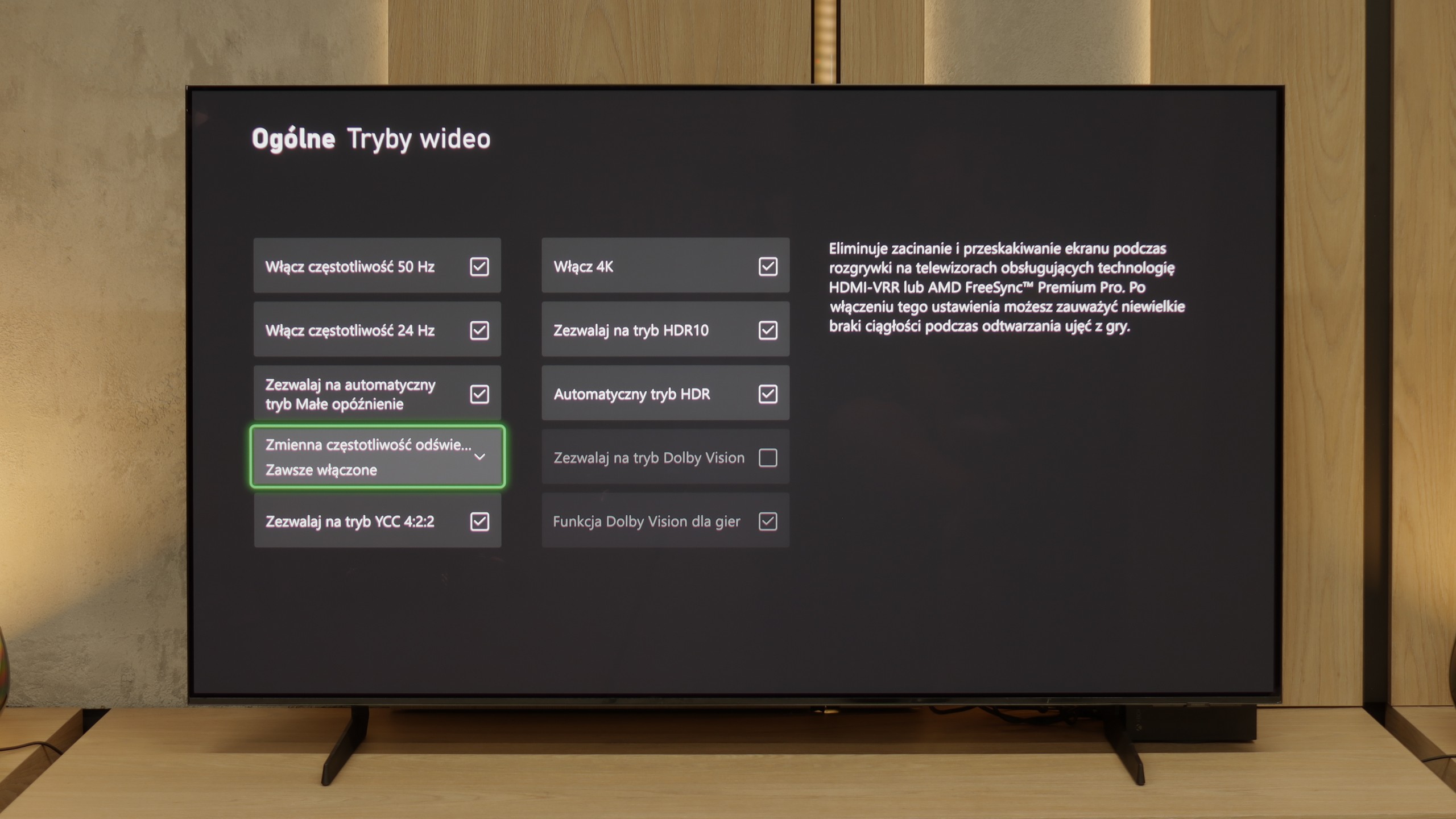

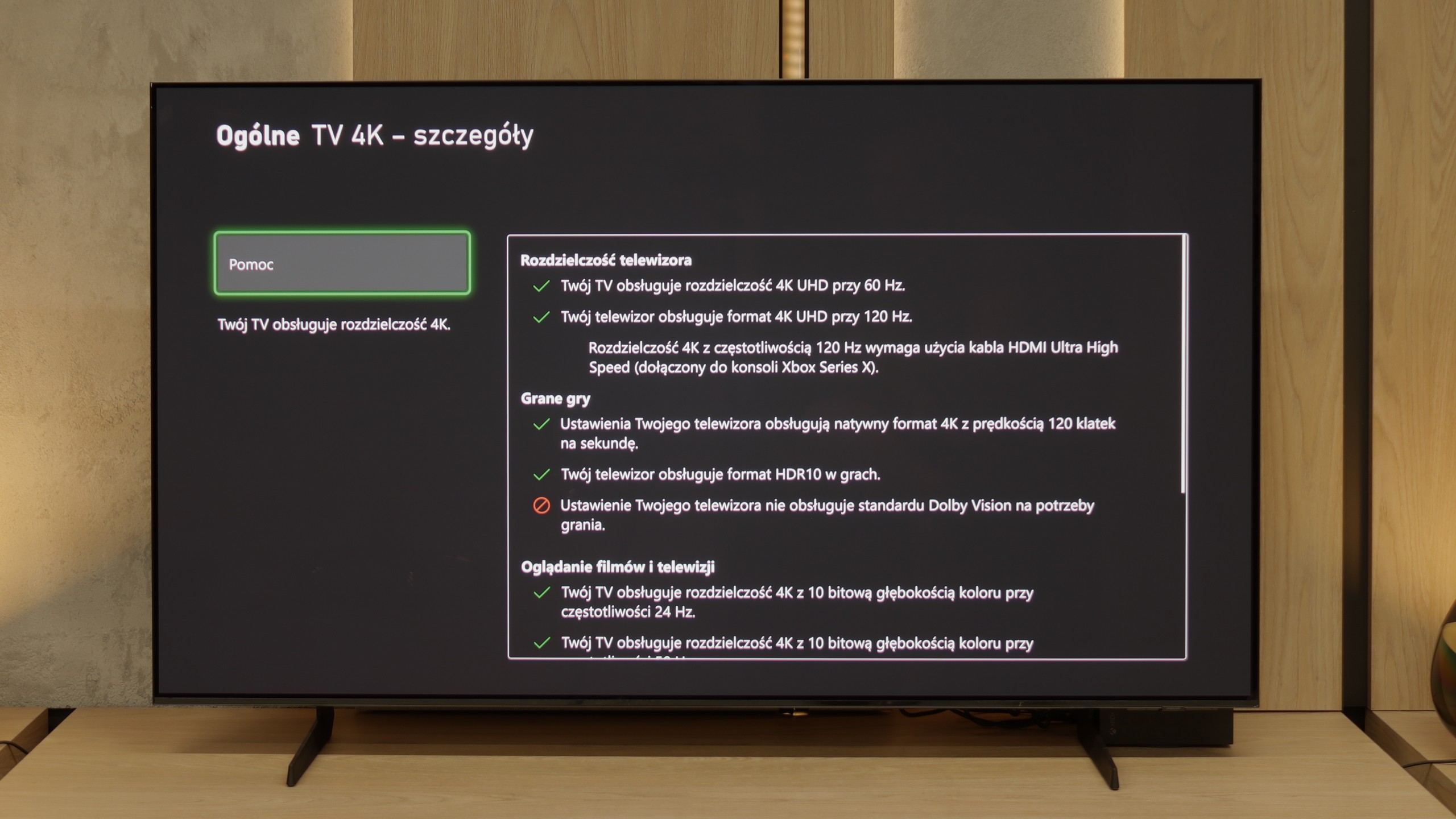

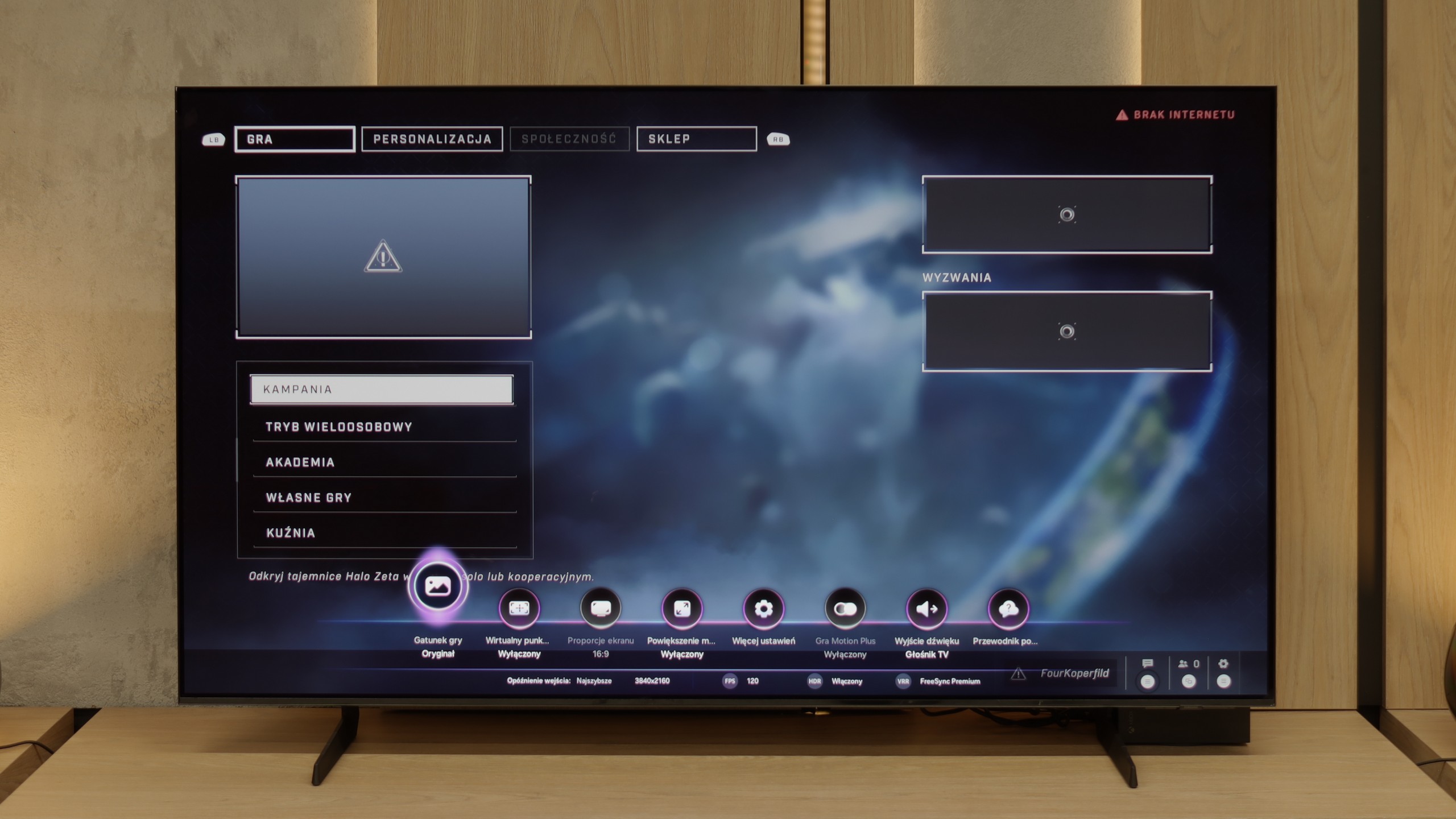

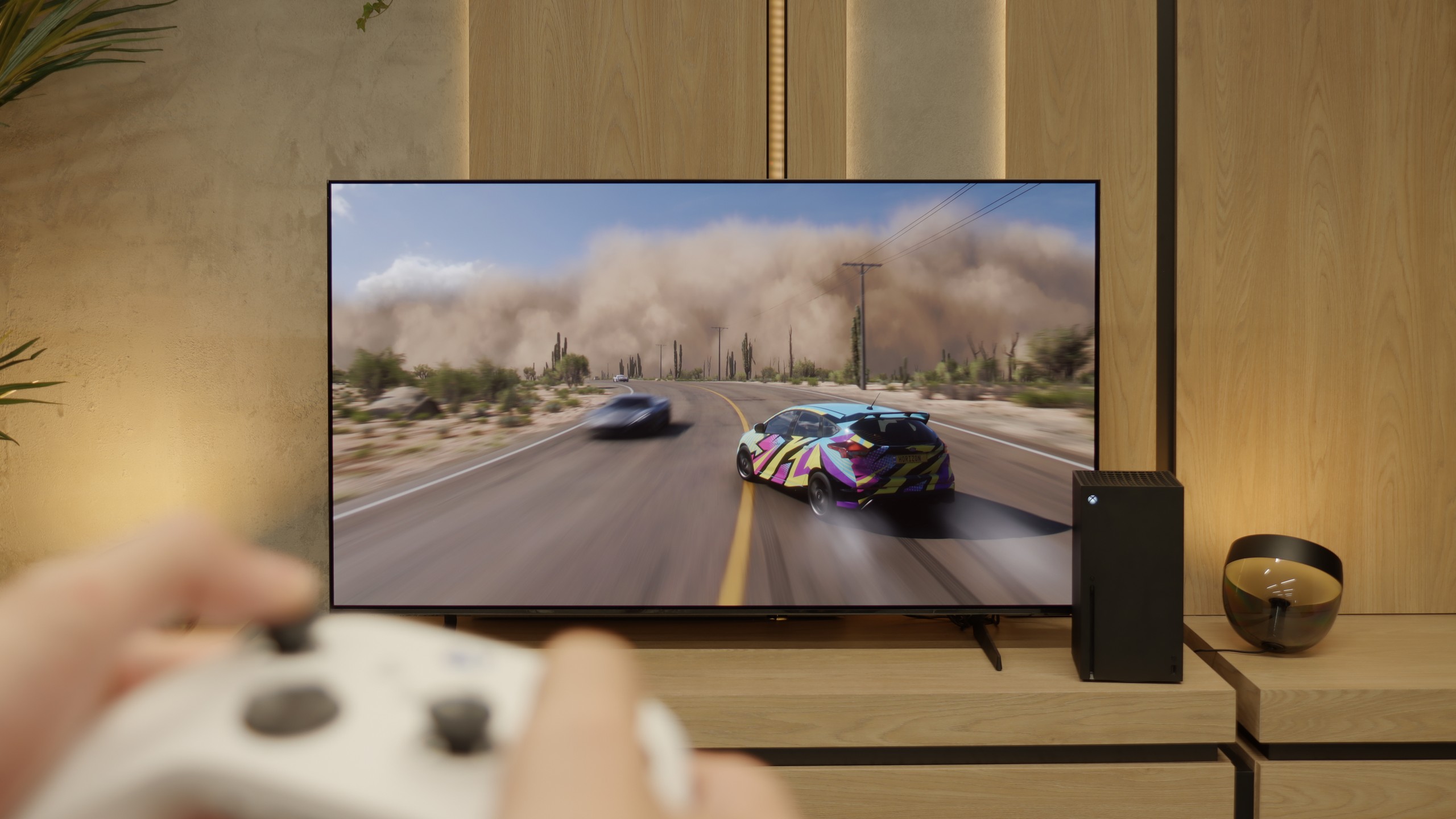
We can now say that LG C4, like practically every OLED television from the manufacturer, is exceptionally good in terms of cooperation with consoles and PCs. Thanks to the implementation of four full-bandwidth HDMI 2.1 ports at 48 Gbps, the manufacturer has embedded all the features that enhance gaming comfort, including simultaneous support for FreeSync and G-Sync technologies. With such a tandem, players with graphics cards from AMD or nVidia can safely choose C4. However, what should please gamers demanding the highest possible quality the most is the simultaneous implementation of HDR Dolby Vision and HGIG mode. The former is particularly important as it operates with extremely low input lag in all settings.
A standard feature in televisions from the Korean manufacturer is also the implementation of GameBar, allowing for quick adjustments of settings "on the fly," without the need to exit the game. It also allows for image adjustments for people with visual impairments, which is an incredibly nice touch. Another important piece of information is that when VRR technology is enabled, we won’t experience a drop in contrast. This is, of course, due to the design of the panel and the absence of conventional backlighting. It is, however, normal for shades of grey to flicker slightly, although this is a characteristic feature of this function regardless of the manufacturer and television.
In summary: LG C4, just like all the manufacturer's OLEDs equipped with high-refresh-rate panels and HDMI 2.1 connections, creates a harmonious whole with consoles. In practice, it is a complete television, and if we expect the highest possible efficiency in gaming, C4 will be an ideal choice.
S85F has practically everything on board to become the dream screen for gaming. Four full HDMI 2.1 ports with a bandwidth of 48 Gb/s, support for VRR, ALLM, a super-detailed Game Bar that clearly shows all parameters – plus a gem in the form of Game Motion Plus. This motion smoother makes animation in games more enjoyable, while input lag increases slightly. It's a rare combination, and that’s a big plus for Samsung.
Perhaps Samsung will fix this in the next update – and we have high hopes for that. Because if HGiG comes back, the S85F will become nearly the perfect TV for gamers.
Input lag
10/10
10/10
SDR
HDR
Dolby Vision
The latency time of LG C4 is remarkably low in every scenario. Even the most avid gamers will surely appreciate the very low input lag at demanding 4K 120 Hz settings with HDR, which is only 5 ms. It's also worth noting that the lag at these same settings, but with Dolby Vision HDR enabled, remains unchanged, which is not so obvious with the competition. Therefore, it deserves the highest rating and recommendation.
Here, dear gamers, the S85F shows its claws. 5 ms with 120 Hz content and around 10 ms with 60 Hz are results that can be described in one word in the world of televisions – phenomenal. This means that the response to our movements is practically instantaneous. We press the button, and the action on the screen happens without any delay, as if the television can read our thoughts. In dynamic games, where a fraction of a second can decide victory or defeat, such values make a huge difference. There's no question of a nervous "wait" for the image to catch up with our movements. The S85F gives us the feeling that everything is under our complete control – and that's how it should be in equipment that aspires to be the ideal screen for a gamer.
Compatibility with PC
8.6/10
7.6/10

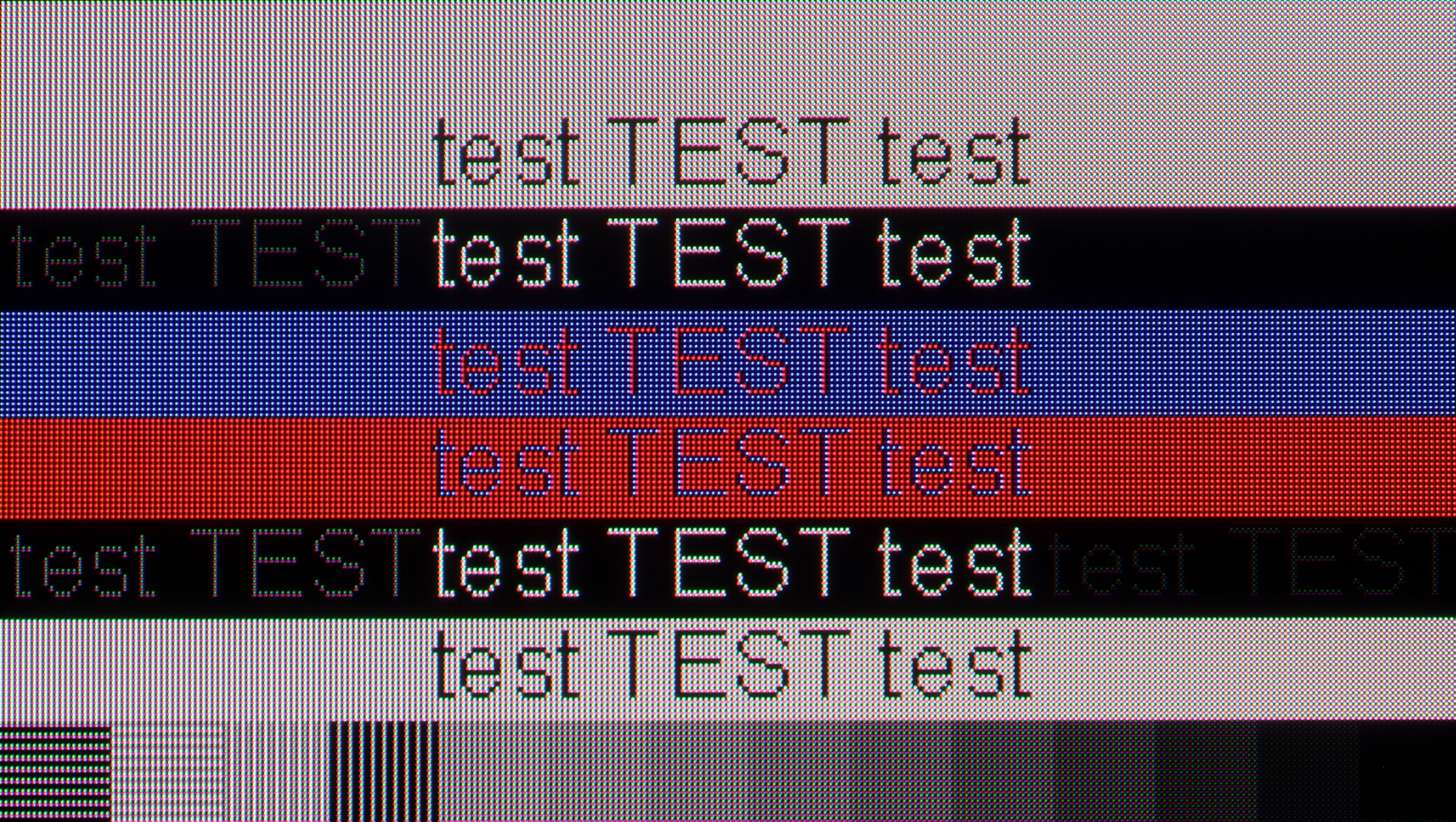
LG C4 combined with a PC works wonderfully, thanks to its very low latency of just 13.5 ms, which is practically instantaneous feedback between the mouse, eye, and screen. An extremely important aspect when working on a screen is the readability of text, which in the case of the tested TV is very good. However, it is worth noting that to achieve sharp fonts, you need to enable the passthrough option in the settings.
The RWBG pixel layout does not significantly affect the display of fonts or letters, which is a significant advantage over Samsung's QD-OLED panels. Users of both Windows-based PCs and macOS will surely be pleased with their experience on the tested TV screen.
If you're planning to connect the S85F to a computer, we have good news – this television is perfect for that. Low input lag and a 120 Hz panel make gaming on PC a pure pleasure. Whether we're talking about dynamic shooters or more relaxed RPGs, the response is instantaneous, and the smoothness of the animation can draw you in for hours on end.
Of course, there’s no rose without thorns. Due to the diamond pixel layout in the QD-OLED panel, there is a slight "rainbow icon" effect, particularly noticeable when sitting close to the screen. Fortunately, this is more of a detail that most of you won’t mind in everyday use. Especially since, thanks to the proper implementation of 4:4:4 chroma, the readability of fonts is at a very good level – documents, websites, and text editors simply look as they should.
Viewing angles
7.5/10
9.8/10
The undisputed advantage of OLED panels is their efficiency in the context of group viewing, meaning from various angles. LG C4 maintains very good contrast, colour saturation, and fidelity. Although this isn't a result of organic TVs supported by MLA technology, it's fair to say that anyone who purchased the device was satisfied with the results obtained. However, it should be noted that at sharp angles a slight greenish tint can be observed. This is a characteristic feature of WRGB panels from LG, without the aforementioned micro-lens technology, and unfortunately, there's nothing that can be done about it.
Here, dear readers, the S85F reaches the absolute peak. The viewing angles are phenomenal – some of the best you can get in a TV today, and it’s thanks to the unique QD-OLED panel from Samsung Display. Of course, WOLED panels can also maintain a high level in this regard, but let’s not kid ourselves – what the QD-OLED shows in the S85F is even more impressive. Colours, contrast, and brightness remain practically unchanged even when viewing the screen from a very large angle. It’s the kind of television where you don’t have to fight for the “best spot on the couch” – everyone will see the picture in all its glory, no matter where they’re sitting.
TV efficiency during daytime
5.7/10
5.1/10

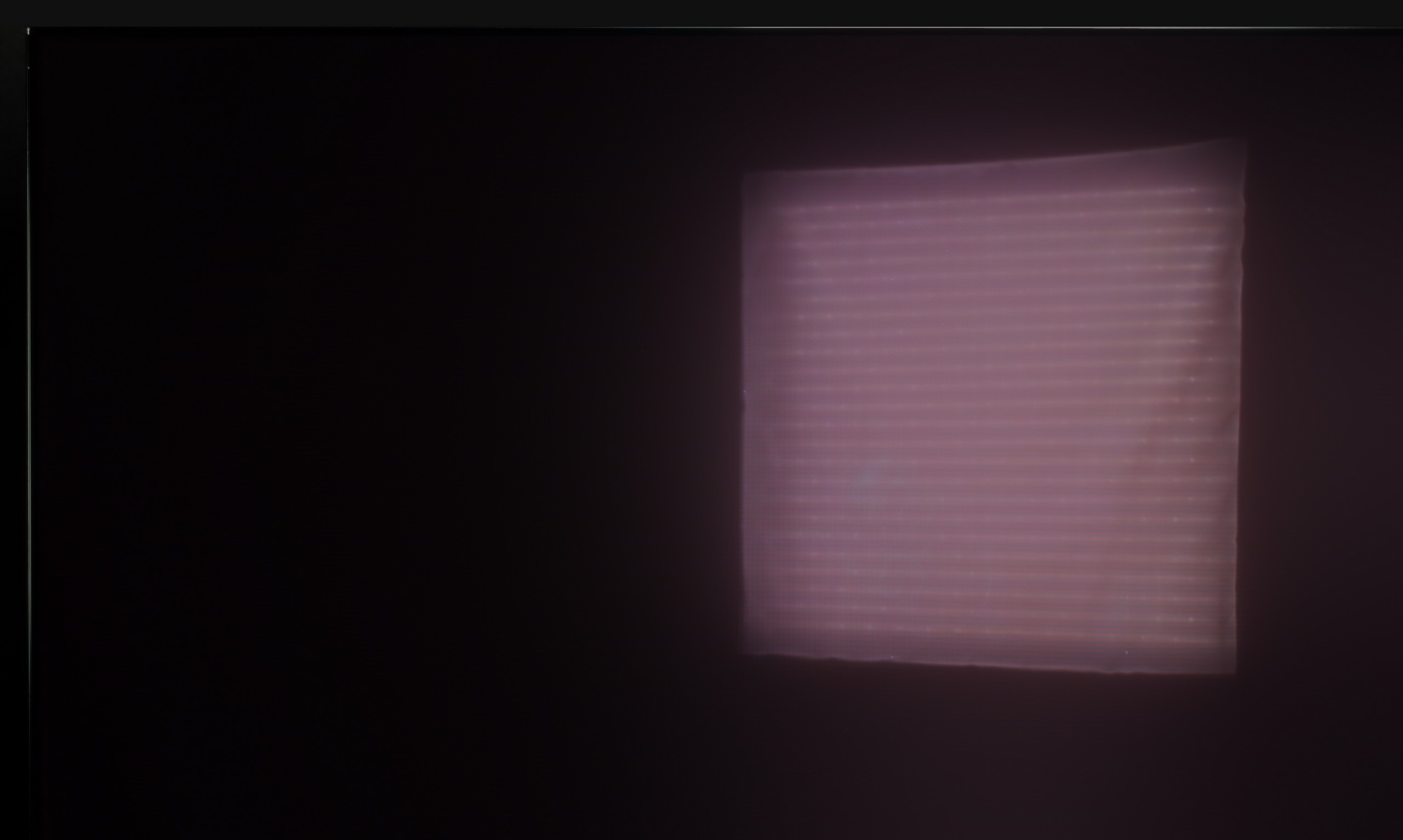


Matrix brightness
Average luminance SDR
Samsung S85F OLED: 317 cd/m2
LG OLED C4: 367 cd/m2
The maximum brightness of the television in SDR materials is 367 nits. For an OLED television, this is a very good result and allows for quite comfortable viewing during the day. It's worth noting two things. Thanks to the glossy coating of the panel, the light reflections are well held in place and do not spill over the rest of the panel. The second issue is the brightness of the screen when fully filled with white, oscillating around 220 nits, which is a remarkable result, as until recently, OLED televisions in this category could only boast brightness half as much. As a result, the conditions for watching, for example, winter sports will be very good.
We really liked the saying "no rose without thorns," and it fits perfectly with QD-OLED TVs. Especially when we look at their performance in highly lit conditions. As you may notice, under very intense light, the surface of the panel can take on a slightly cherry hue. The effect is subtle in the case of the S85F, but in extreme lighting conditions, black can appear a bit worse than in WOLED panels. But – and this "but" is key here – QD-OLED suppresses direct light reflections much better. This means that reflections will be less bothersome, and the picture will retain clarity even when something bright reflects on the screen. You win some, you lose some.
As for brightness, the S85F is a moderately bright OLED. It’s not a model designed for extremely sunny living rooms. If you plan to place it in a very bright room, we recommend considering blinds or placing it in a location that at least partially protects it from direct light.
Details about the matrix
Subpixel Structure:


Panel uniformity:

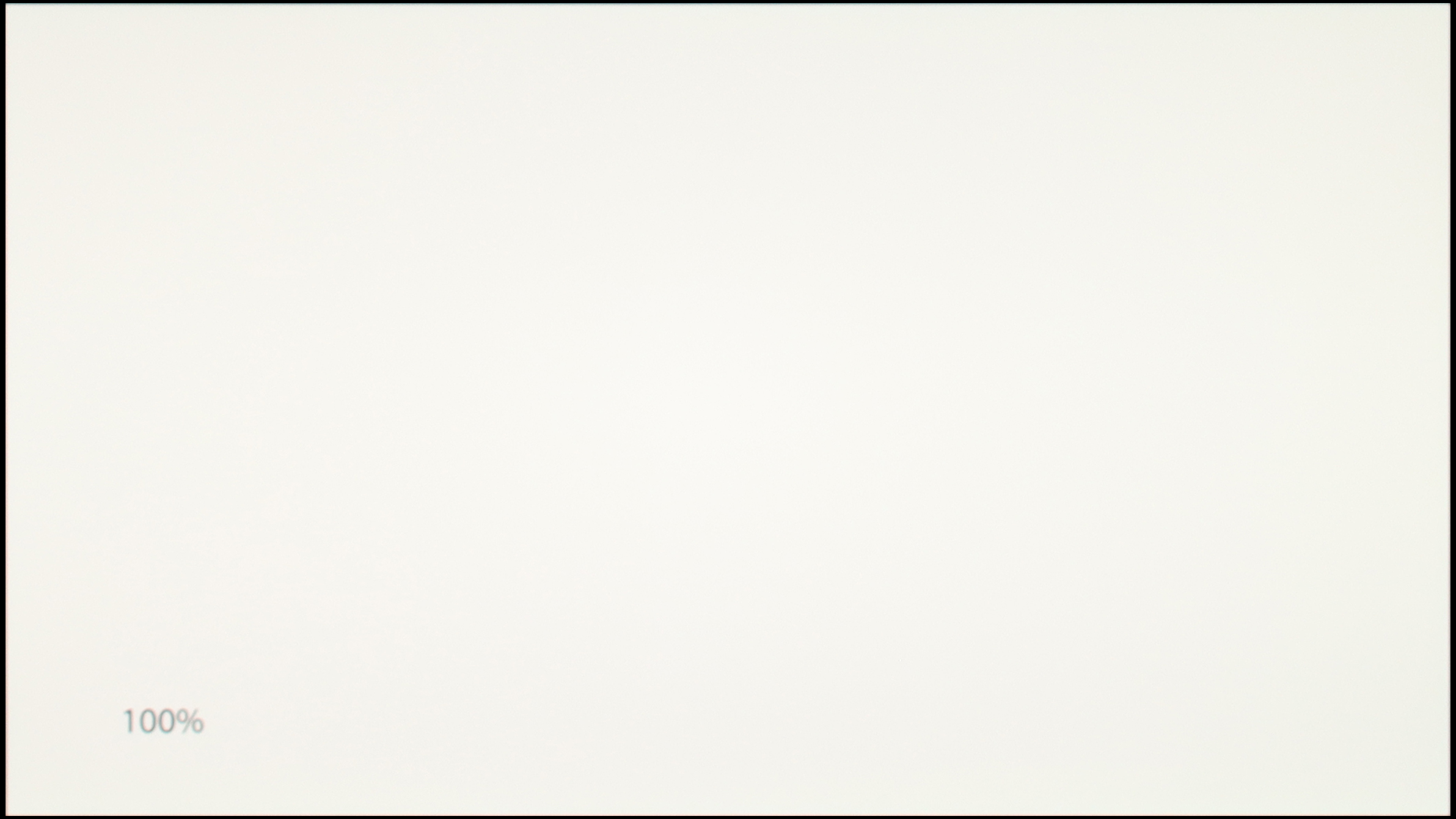
LG OLED C4
Samsung S85F OLED
TV features
9/10
7.2/10
- HDMI inputs0 x HDMI 2.0, 4 x HDMI 2.1 48Gbps0 x HDMI 2.0, 4 x HDMI 2.1 48Gbps
- Other inputsIR (remote)Toslink (Optical audio)
- OutputsToslink (Optical audio), eARC (HDMI), ARC (HDMI)Toslink (Optical audio), eARC (HDMI), ARC (HDMI)
- Network InterfacesWi-Fi 2.4GHz, Wi-Fi 5GHz, Ethernet (LAN) 100MbpsWi-Fi 2.4GHz, Wi-Fi 5GHz, Ethernet (LAN) 100Mbps
- TV receptionDVB-T, DVB-T2, DVB-S, DVB-S2, DVB-CDVB-T, DVB-T2, DVB-S, DVB-S2, DVB-C
Classic features:
- Recording to USB (terrestrial TV)
- Recording programming
- Picture in Picture (PiP)
- RF remote control (no need to aim at the screen)
- Backlit remote control
- Teletext
- Audio only mode
- Possibility to connect Bluetooth headphones to the TV
- Possibility to simultaneously use Bluetooth headphones and the TV speaker
Smart features:
- AirPlay
- Screen mirroring (Windows Miracast)
- Wyszukiwanie głosowe
- Voice search in native language
- Ability to connect a keyboard and mouse


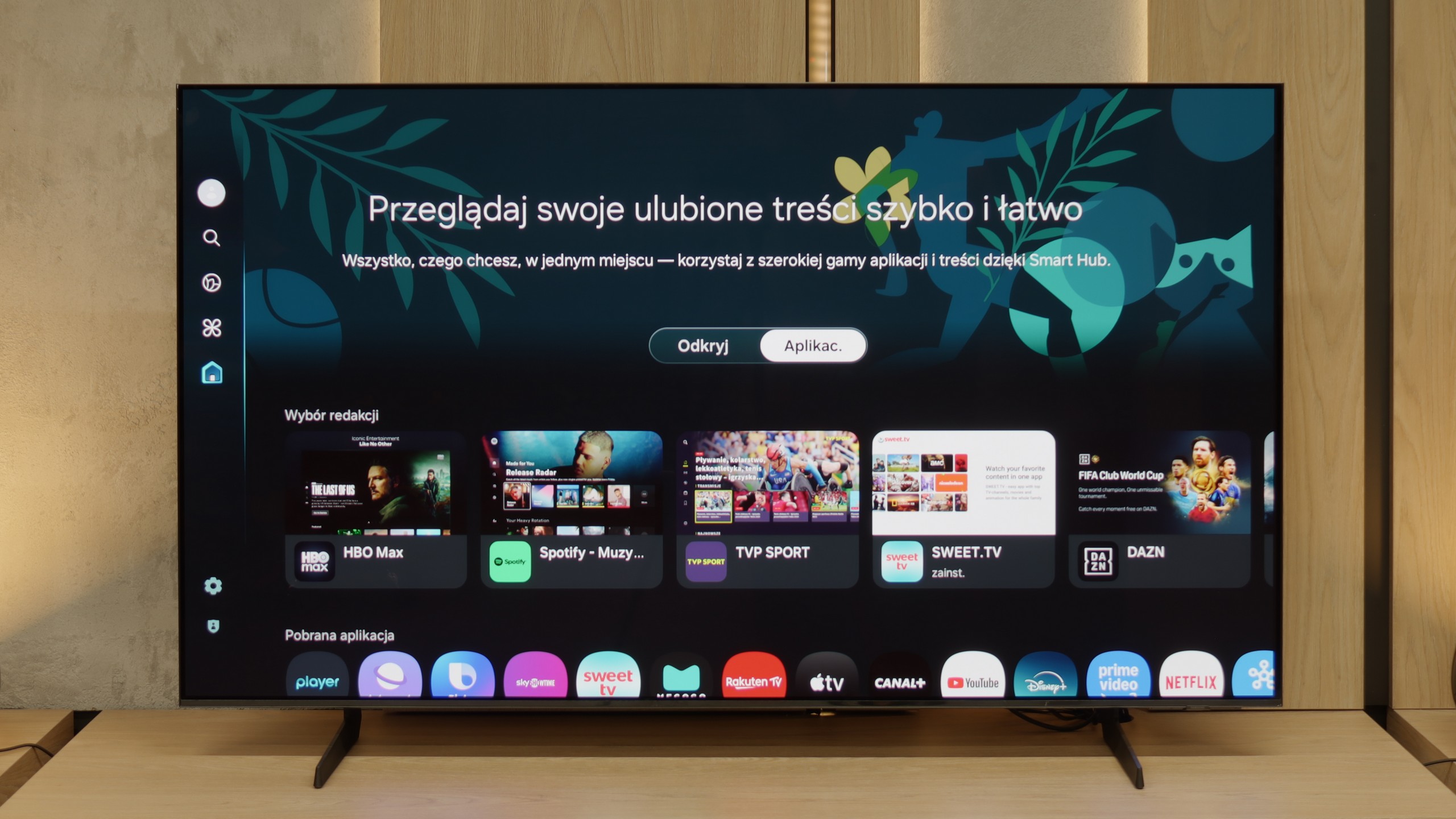
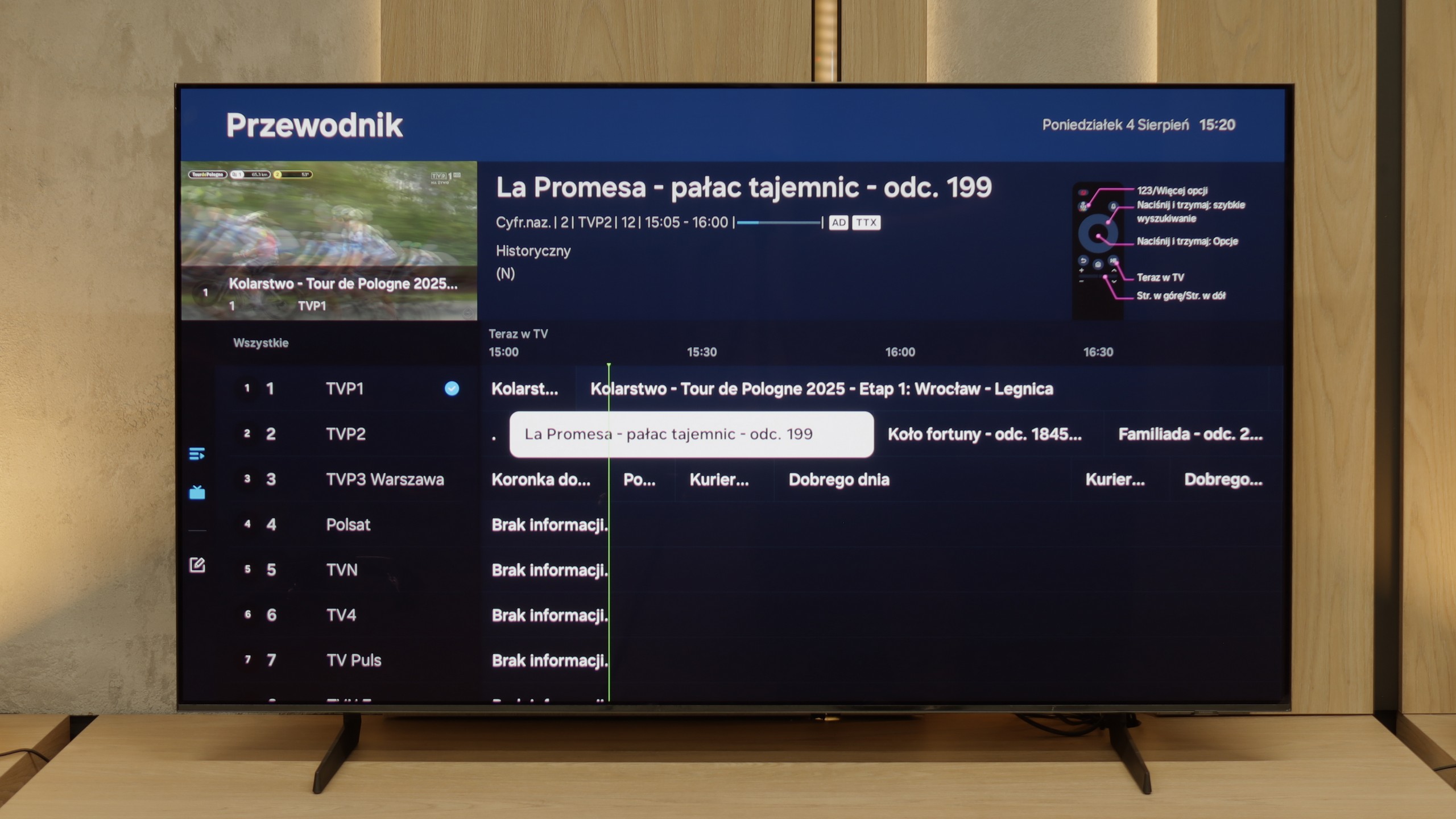
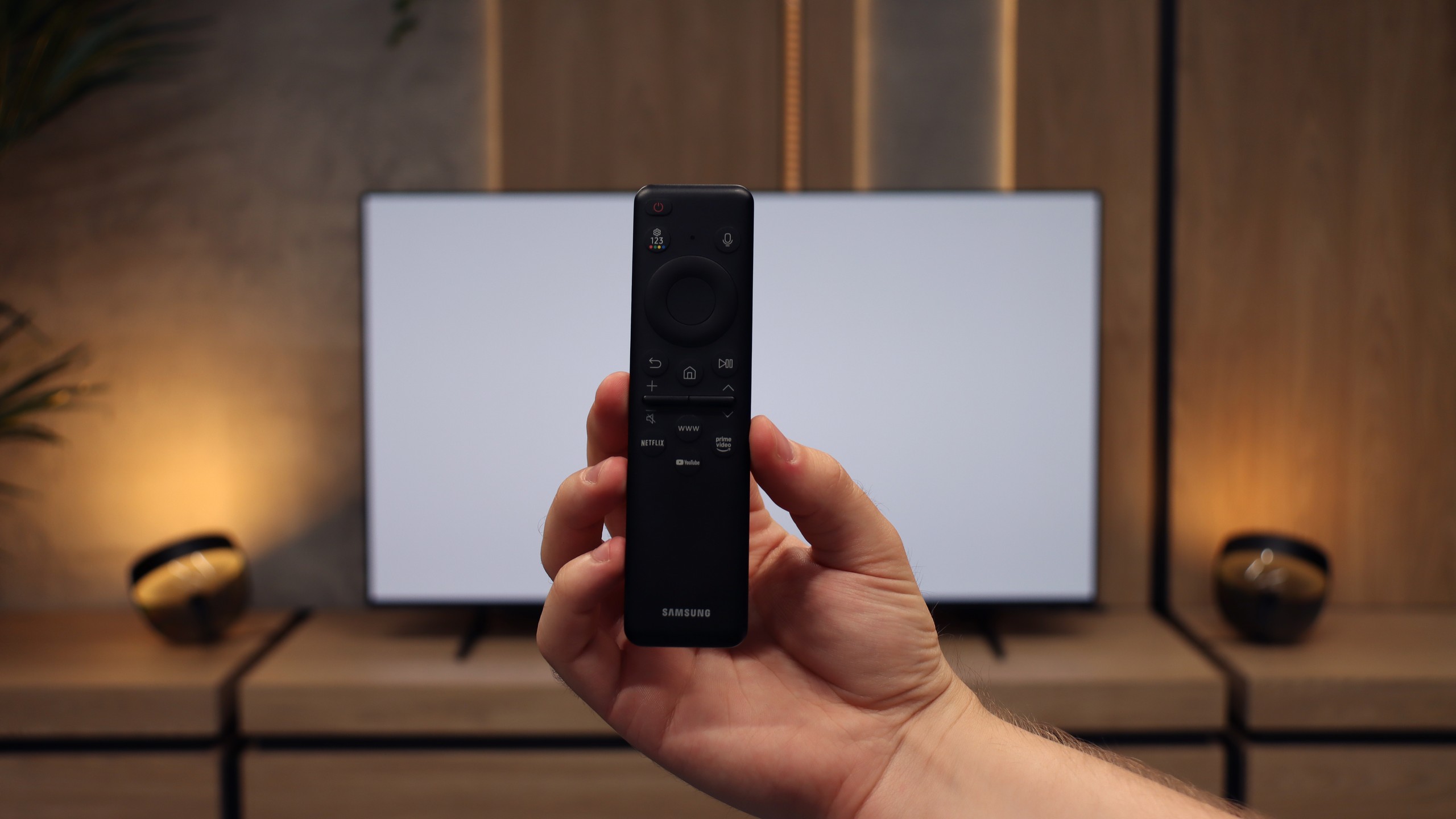

LG uses the well-known proprietary WebOS system that has been around for many years. The system offers virtually all the major apps, and the few that are missing can be counted on one hand, such as CDA or KODI. It's also worth noting that the modern web browser and the remote with a built-in mouse allow for convenient access to streaming services in this way, if there isn't a built-in app.
WebOS also features a highly praised ability to perform operations using a cursor that appears when the remote is moved. The convenience of this function is invaluable when entering queries or passwords for portals. WebOS, like most systems, also supports features such as screen mirroring, AirPlay, voice searching in Polish, and the ability to connect headphones via Bluetooth. On a more practical note, WebOS allows simultaneous use of headphones and the television speaker, which will certainly be a significant help for those with hearing impairments. One of the more interesting features, particularly appreciated by sports fans, is the ability to turn on an alert for an upcoming match, ensuring that we never miss a broadcast. The home panel also deserves praise, allowing for control of all smart devices connected to the home network. For example, the end of a wash cycle will be signalled by a notification in the top right corner.
In summary, the WebOS system, although less known and with certain limitations compared to Android TV, offers stable and quick performance and supports most functions that users may need. It is a solid solution for those looking for a simple and effective operating system in their television.
Features of the classic S85F television
The S85F was not really designed with fans of classic television in mind. We won’t find a PiP function here (which is somewhat surprising, as Samsung typically offers it) or the ability to record programs onto USB from the built-in tuners. Fortunately, the basics are there – teletext and a clear channel guide – so it’s more than sufficient for regular, everyday viewing. The included remote, although simple at first glance and lacking a numeric keypad, allows for control of multiple devices. This means that when connecting, for example, a Canal+ decoder, you don’t need two remotes on the table – the one for the television is quite enough.
SmartTV S85F: Tizen
The smart part is a completely different story. Tizen is one of the most comprehensive operating systems in televisions. It operates smoothly, supports all popular internet functions – from screen mirroring to AirPlay to voice search. The strongest point of Tizen is its integration with the SmartThings app, which can act as a control centre for the entire home. Of course, like any closed system, Tizen has its limitations – for instance, a smaller app library compared to GoogleTV. However, looking at the current list of available applications, it’s hard to point out anything that might actually be missing.
Playing files from USB
9.3/10
9.1/10
Supported photo formats:
Maximum photo resolution:

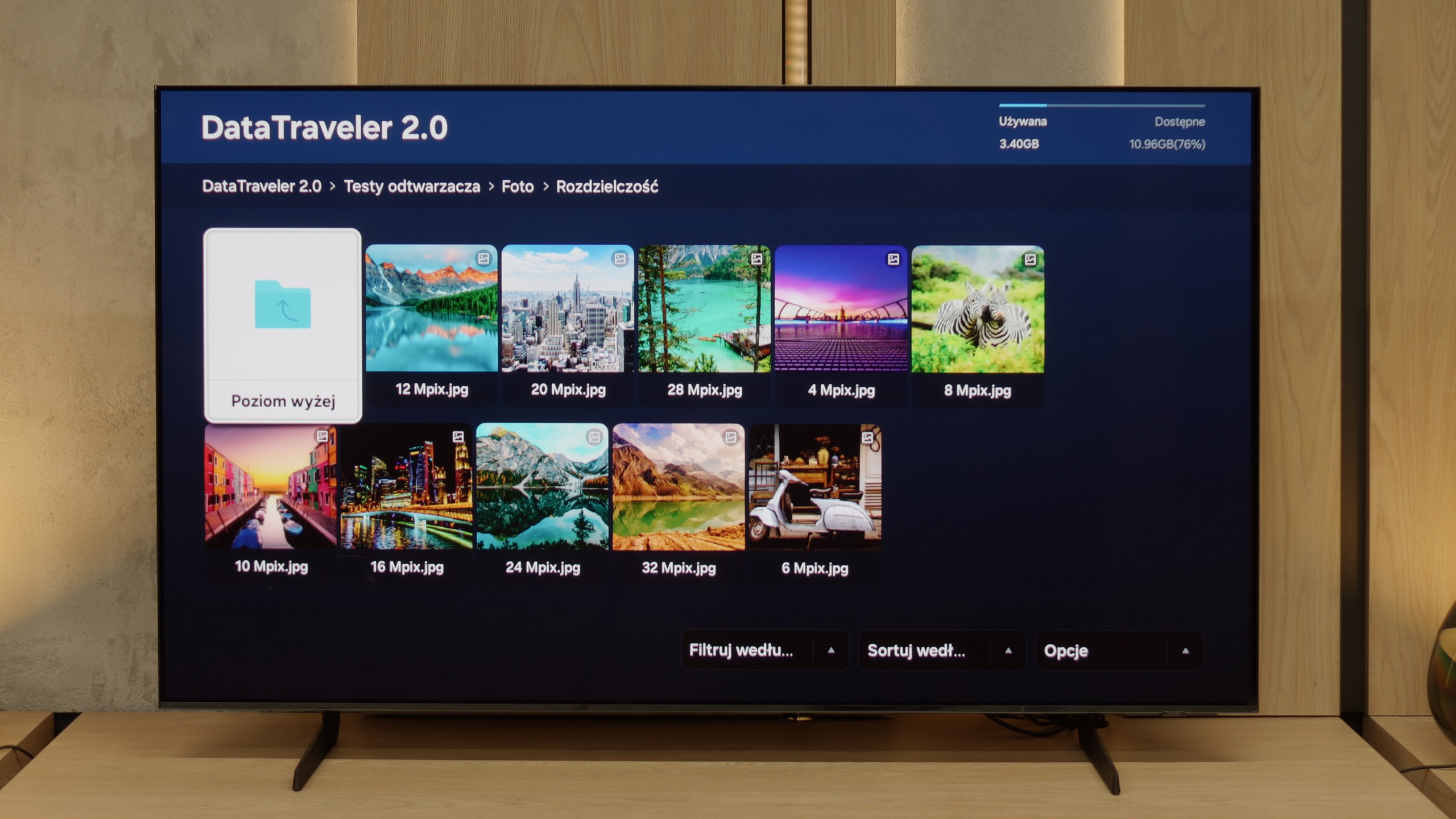
The default file player on LG C4 handles all photo resolutions exceptionally well. It successfully plays videos recorded in practically all the most popular formats, including Dolby Vision. The only codec that the C4 won't play is H.266 VVC, although this is currently rather uncommon. It's a pity that subtitles in .txt format are not supported. Attention should be paid to the supported photo formats, of which there are only three: JPEG, PNG, and, importantly for Apple phone users - HEIC. However, the tested television cannot be faulted for a lack of variety in audio files, which can be played without a compatibility warning.
The built-in media player in the S85F performs excellently – practically everything you throw on a USB stick or hard drive will be played back without the slightest issue. Minor shortcomings only arise in the support of some less common photo formats, but for the vast majority of you, this will be more than sufficient. Therefore, it can be confidently stated that for home use, the built-in player is more than solid.
Apps
8.7/10
8.7/10














































Sound
7.5/10
7.2/10
- Subjective sound quality:7.5/107.2/10
- Dolby Digital Plus 7.1:
- Dolby True HD 7.1:
- Dolby Atmos in Dolby Digital Plus (JOC):
- Dolby Atmos in Dolby True HD:
- DTS:X in DTS-HD MA:
- DTS-HD Master Audio:
The audio system implemented in LG C4 is very well tuned, allowing us to experience strong bass as well as balanced mid and high tones. We can confidently say that in its price range, it's one of the better sounding televisions. However, we believe that those deciding to purchase the C4 will already have a dedicated audio set. The presence of DTS-HD Master Audio and Dolby Atmos codecs will also be significant.
The built-in speakers rated at 20 W on paper may not seem impressive, but in practice, the S85F can be surprising. It sounds really pleasant, and at times you can even pick up a subtle bass, which is not a given in this class of speakers. The TV does not support the DTS format, which unfortunately became a standard for most manufacturers by 2025. A nice surprise is the support for Dolby Atmos. Of course, talking about "spatial" sound with two speakers located at the bottom of the casing would be a slight exaggeration, but it's good that Samsung offers such a feature in this model at all.


